On 18 April, violent clashes broke out in the little village of Ponparappi in Ariyalur district of Tamil Nadu.
A group of around 100 Vanniyar men and youth gathered at Gandhinagar, the Dalit colony in the village, and at the end of an hour of violence, 16 Dalits and 2 Vanniyars suffered injuries. Along with this, around 60-65 houses of Dalits were destroyed and 12 motorbikes were damaged.
Ponparappi stood changed forever.
A fact-finding team from NGO People’s Union for Civil Liberties (PUCL) which visited the village much after the violence reported that it was instigated by a few drunken Vanniyar youth who had broken pots to mock the Dalits.
Vanniyars are a group of castes, termed by the state government as Most Backward Classes (MBCs). They are dominant in the northern districts of Tamil Nadu.
While Ponparappi is in Ariyalur district, it falls under the Chidambaram Lok Sabha constituency which is a reserved seat. In Chidambaram, leader of Dalit party Viduthalai Chiruthaigal Katchi (VCK) Thol Thirumavalavan contested in alliance with the DMK-Congress front, but as an independent, with the pot symbol. (DMK is the Dravida Munnetra Kazhagam, one of the two Dravidian parties in the state)
The use of WhatsApp as a means to spread caste hatred, culminating in violent clashes, appears to have been most virulent in the village of Ponparappi in Ariyalur district, although it was not the only one.
The violence, which took place on the day Tamil Nadu went to polls on 18 April, was a fallout of casteist propaganda on WhatsApp groups belonging to both Vanniyars and Dalits.
In the run up to polling day, an undated video of Thirumavalavan seems to have gone ‘viral’ in the village, especially amongst the Vanniyar caste WhatsApp groups. In this video, Thirumavalavan has made derogatory comments about Vanniyar men and stated that the women of the caste prefer Dalits.
Another ‘viral’ message that was passed amongst the Vanniyar youth here was an image of a ‘magazine’ called “Acchamillai” (Fearless). This image of an ‘article’ in the ‘magazine’ exhorts Vanniyars to boycott Thirumavalavan and ensure that he does not win, attributing all types of atrocities to the leader. The write-up instils fear in the minds of Vanniyars that Dalits would “woo Vanniyar women, marry them, take gold and money from them and then desert them.”
The PUCL fact-finding report released on 02 May states – “Further, each community has access to defamatory messages being spread on social media against the other community. This access is largely with youngsters belonging to both communities. The youth of both communities themselves play a large part in creating such opinions on social media platforms. These youth play an active role in fanning the flames of caste hatred.”
Pointing to the emerging trend of the use of WhatsApp and other social media platforms to spread casteist venom as a danger that needs to be addressed quickly, K Saravanan, general secretary of the PUCL, Tamil Nadu and Puducherry told The Lede that it was largely youngsters of both communities who were propagating such messages.
“It is mainly WhatsApp through which videos recordings are being circulated,” said Saravanan. “The youngsters are the ones who see it and tell the rest of the villagers. Educated members of both communities have not participated in these clashes. Those youngsters who have gone out of Ponparappi and are working in bigger cities are the ones who are the sources of provocation. Even the elders in both communities say that it is the youngsters who are attached to caste more than them,” he explained.
Although WhatsApp was the medium through which these messages of hate spread rapidly, other social media platforms such as Facebook and Instagram do equal damage. “Even on Facebook there are caste related pages and groups which spew venom and defamatory caste-based messages online,” said Saravanan.
From Ponparappi to Ponnamaravathi
Almost 200 kilometres away from the village of Ponparappi, as the Dalit colony of Gandhinagar sat dazed in the aftermath of violence, protests gathered momentum at the village of Ponnamaravathi in Pudukottai district.
Hundreds of men and women poured into the streets, the women armed with brooms, the men with stones and sticks, damaging public property, buses and shops in the market.
These protesters belonged to the Mutharayar community, an intermediary caste (designated by the state government as OBC or Other Backward Classes).
Their anger was once again over a video recording that spread like wildfire via WhatsApp in the area. In this video, which is shot in darkness, two men are heard “discussing” how “easy” Mutharayar women are. References in the local slang hint at the men belonging to the Dalit caste.
For three days Ponnamaravathi was held hostage by the Mutharayars, as they demanded action from the district administration. The district collector was forced to clamp down prohibitory orders for three days until the situation eased off on April 22.
The police arrested four men in connection with recording the video and circulating it via WhatsApp. Of the four, two were working as labourers in Singapore. All four belonged to the Mutharayar caste themselves.
“Their motivation was to ensure that an independent candidate who belonged to the Scheduled Caste community would not win the elections,” said a senior police officer of Pudukottai district. “So in an effort to unite their own community people, they have recorded the video and circulated it. The accused are labourers in Singapore and they have formed a caste-related WhatsApp group,” he said.
While one of the accused Selvakumar was arrested at the Chennai international airport as he landed from Singapore earlier this month, Sathyaraj and Murugesan who lent their voices to the video clip were arrested upon landing at Trichy international airport. The others who were arrested were guilty of circulating the clip via WhatsApp.
From Ponnamaravathi To Cuddalore
Another 250 kilometres away and a few days later, on 03 May, a group of teenage Vanniyar boys were playing volleyball at Kuchipalayam village in Cuddalore district of Tamil Nadu.
Two Dalit boys arrived on a bike and asked if they could be included in the game. These two youngsters belonged to Mel Kavarapattu village.
The Vanniyar boys refused to let them join in and an altercation ensued. A fight broke out and before long, it became a caste clash.
Four youngsters – Raghupathi, Dayalan, Bhuvaneswaran and Ramalingam were injured and admitted to the Panrutti government hospital.
Two thatched huts and two motorbikes were damaged in the stone pelting that followed. The area is now surrounded by the police, as tensions continue to simmer.
Three persons have been detained under Tamil Nadu’s draconian Goondas Act which leaves little scope for bail.
In the run-up to the elections, the residents of these villages had been exposed to a host of WhatsApp propaganda – largely of the caste hatred variety. Videos attacking Vanniyars and Dalits made their way into the smartphones of the young men and women of Kuchipalayam and Mel Kavarapattu, spreading venom.
“There are a lot of WhatsApp groups even in very remote villages,” said a senior police officer in Cuddalore who did not wish to be named. “These are groups of people of the same caste. We have video recordings by some people, which attack Vanniyars verbally,” he added.
Tamil Nadu’s Youth, Caste & WhatsApp
“Everybody has now become more casteist,” said C Lakshmanan, Associate Professor with the Madras Institute of Development Studies (MIDS) and an expert on Dalit studies. “Particularly literate and semi-literate youth are more casteist than ever. It is horrifying. And on WhatsApp and social media the content is completely unverified, unedited and casteist,” he said.
Police officers lament that it is the youth, who go out to bigger cities and work, that create problems when they return home for holidays or festivals.
“During elections or during Pongal festival, there used to be caste problems,” said the senior officer from Cuddalore district. “The main reason is during the holidays, these ‘outsiders’ would come back to the village. They are the main reason for the problems being created. They will spend lavishly, they will purchase liquor and give it to the downtrodden villagers and incite caste passions,” he said.
The officer also said that the population of Dalits and intermediary castes is almost equal, especially in the districts of Cuddalore and Villupuram. “In 2018, a missed call caused rioting and caste clashes in Villupuram. Both communities are spoiling their own community and inciting them,” he added.
Dalit expert Lakshmanan agrees. “The younger generation post-Mandal has not seen any anti-caste politics. In fact Mandal has given caste a renaissance. Before that, there used to be some discomfort in talking very openly about caste, even amongst the dominant castes. But after Mandal, that discomfort is completely gone. That was a major break. Across India hardly any serious anti-caste politics was available. There is now an understanding of the power wielded by caste and that is why we are seeing so many youngsters in the post-Mandal era talking the language of caste hatred,” he explains.
It is a combination of this lack of anti-caste politics as well as the upward mobility of Dalit youth working in big cities that has culminated in the dominant caste attacking Dalits viciously when they come home, he adds.
The Law Enforcement Nightmare
Messages of hate being spread via WhatsApp culminating in caste clashes have turned out to a nightmare for the police to deal with.
“It is very difficult to prevent such clashes or even find the culprits,” said both senior police officers from Cuddalore and Pudukottai. “Since these messages are forwarded anonymously on WhatsApp, it is very difficult to trace the origins.”
Police said that they were in fact lucky to have caught the culprits who initiated the messages.
And the odds are indeed stacked against law enforcement agencies. Facebook, Instagram and WhatsApp are all owned by the American giant Facebook and the company is not just slow to respond to the Indian police’s requests to solve such cases, but also refuses in many cases to part with information, citing privacy clauses.
Prevention is another ball game altogether – such messages spread like wildfire from group to WhatsApp group and before the police realise what is going on, they have a caste clash on their hands.
Arrests have been made in all three cases – in Cuddalore, 3 persons have been detained under the Goondas Act; in Ponparappi, 12 have been arrested and 24 members of the PMK (Pattali Makkal Katchi, a Vanniyar party) along with 25 members of the VCK have been charged; in Ponnamaravathi, 4 have been detained under the Goondas Act.
But the next caste riot could happen anywhere, at any time, over any small forward on a WhatsApp group.
“The government should identify responsible people in both communities in every village and move through them,” says K Saravanan of PUCL. “As for social media, there is right to freedom of expression but it has become such that anybody with a smartphone can record any video and spread messages of hate. The government has the challenge of balancing law and order as well as respecting the right to freedom of expression.”

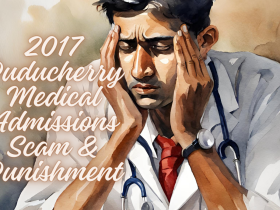
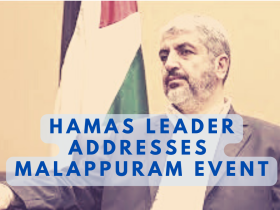

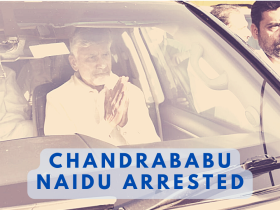
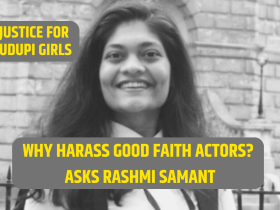
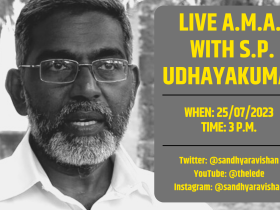

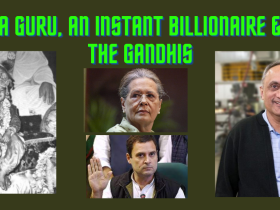
Leave a Reply